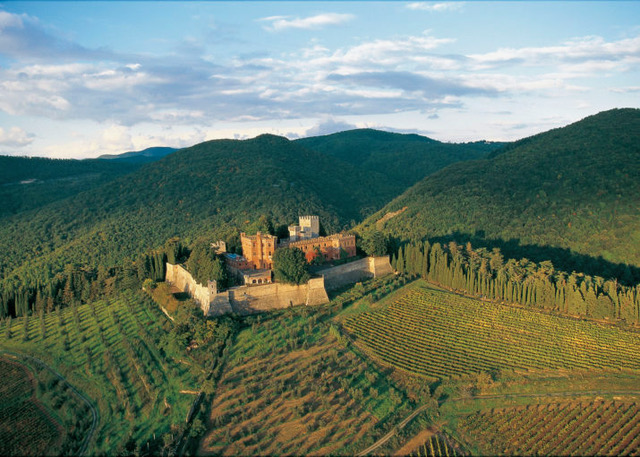Jan 20: Italy is a land where unity, strategy and brands are still taboo but has a panorama of the world’s most diverse terroirs, exciting wines, ‘anarchic’ producers and a lot of history, writes Michèle Shah from Tuscany, who believes that indigenous grape varieties and unique terroirs are what makes Italian wines so special. While the quality has improved tremendously during the last couple of decades thanks to continuous research and experimentation to bring out newer wines the diverse panorama could be challenging to the consumer but one that is a must to embrace
 Italy is by far the most complex, yet at the same time, the richest and most exciting wine producing country. The sheer diversity of its wines stems from over 350 registered indigenous grape varieties, spread over all its 20 regions (States as we call them in India-editor) of production, each with their individual styles, unique ‘terroir’ and microclimate. With this vast plethora, Italy is in a position to offer the consumer something different and exciting, as well as having the potential to reverse the growing trend of the globalization and standardization of wine.
Italy is by far the most complex, yet at the same time, the richest and most exciting wine producing country. The sheer diversity of its wines stems from over 350 registered indigenous grape varieties, spread over all its 20 regions (States as we call them in India-editor) of production, each with their individual styles, unique ‘terroir’ and microclimate. With this vast plethora, Italy is in a position to offer the consumer something different and exciting, as well as having the potential to reverse the growing trend of the globalization and standardization of wine.
Past and Present
Italy’s wine culture goes back as far as the Etruscans, yet it is only in the last quarter century that it has made leaps and bounds in quality winemaking. Even as far back as forty years ago, when Italy was still predominantly an agricultural land, wine was produced in quantity and consumed as part of the daily staple diet.
Over the last two decades, Italy’s winemakers have been filled by boundless optimism. New estates, new wines, and new money have been invested in emerging areas, not to mention continuous improvements in wines already on the market place. Various factors have contributed to what has been a remarkable improvement in quality over the past few decades. A new generation of dynamic winemakers has combined inherited know-how with technical innovation, clonal research and vineyard management.
The most important changes have come from the greater class found in Italy’s traditional wines - led by the classic reds of Piedmont, Tuscany and Veneto as well as the elegant whites of Friuli, Trentino and Alto Adige. Today these regions are still looked upon as innovators of quality. More recently a new surge from the south led by Sicily, followed by Campania, Abruzzi with Puglia and Sardinia close behind, are seen as dynamic forward regions. Their sun-blessed Mediterranean climate yielding fruit-forward wines with structure are able to relate quality to quantity and maintain lower prices, producing wines which can compete successfully with the growing category of New World style of wines.
Yet this surge of enthusiasm now inevitably calls for restraint and realism. The so-called international varieties – Chardonnay, Cabernet, Merlot, Syrah and Sauvignon Blanc – have staked an important place in the vineyards, and even more significant achievements have come from the many native varieties that yield wines of unique and inimitable taste, personality and style. Blends of the two have given some fascinating wines of great class, but the number of international- indigenous combinations seems endless and while none can blame Italy’s winemakers for wanting to exploit the possibilities to the full, maybe the country is near the point where it explodes from an abundance of wines, drowning the spectator in a sea of names.
Market Trends & the Future
 Life styles are changing rapidly throughout the world, consequently, so is the production of wine.Wine is a commodity which needs to adapt its profile to fit in with the ‘life style’ of this present era, without forgetting its ancient roots.
Life styles are changing rapidly throughout the world, consequently, so is the production of wine.Wine is a commodity which needs to adapt its profile to fit in with the ‘life style’ of this present era, without forgetting its ancient roots.
The unique selling point of Italian wines is the diversity, unbeaten by any other country; the overall improvement in quality in recent years; the willingness of consumers to try new products, supported by influential wine journalists, together with the promotional focus on regional wines and food, which are key points in understanding current market trends.
The phase of powerful, anonymous, pumped-up muscular wines or soft, flabby, sweet wine is no longer in vogue. Today’s consumer is looking for a wine that is not overly concentrated and that can express ‘terroir’ and personality. Italian wines can use their ‘diversity’ as a point of difference, yet at the same time produce wines which please the consumer.
Indigenous varieties versus international varieties are still a hotly debated issue. Indigenous wines are important, but top wines other than Brunello, Barolo, Barbaresco and Amarone, like Bordeaux blends rule the roost, such as Ornellaia, San Leonardo and Sassicaia.
In Italy, as elsewhere, demand and interest for organic and natural wines is increasing. Maybe this isn’t a surprise, as some classic wines from classic appellationsmade by some of Italy’s top producers have always been made with minimal intervention. There are two very active natural wine association established in Italy, the first Viniveri and the second VinNature with a third of members coming from other European countries.Together they form the backbone of Italy’s natural winemaking movement.
 Michele Shah
Michele Shah
She hails from UK but Michèle Shah has been living in Tuscany for decades and loves the wines and lifestyle of Italy. She is a very popular link between producers and importers and consumers alike and is more than just a journalist specializing in Italian wines and occasionally writing for delWine. She is an international wine critic and journalist marketing and promoting International wines, organising professional tastings and workshops for the trade as well as international press trips for the trade and tailor made press trips for corporate and private travel to Italy .To learn more about her, please visit her websites
www.micheleshah.com
www.micheleshahtravel.com
If you Like this article please click on the Like button